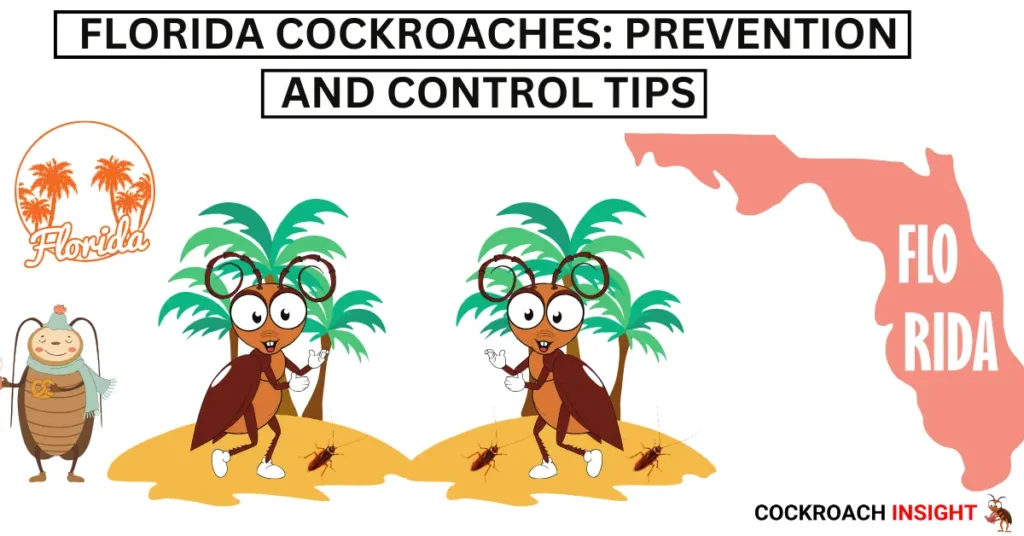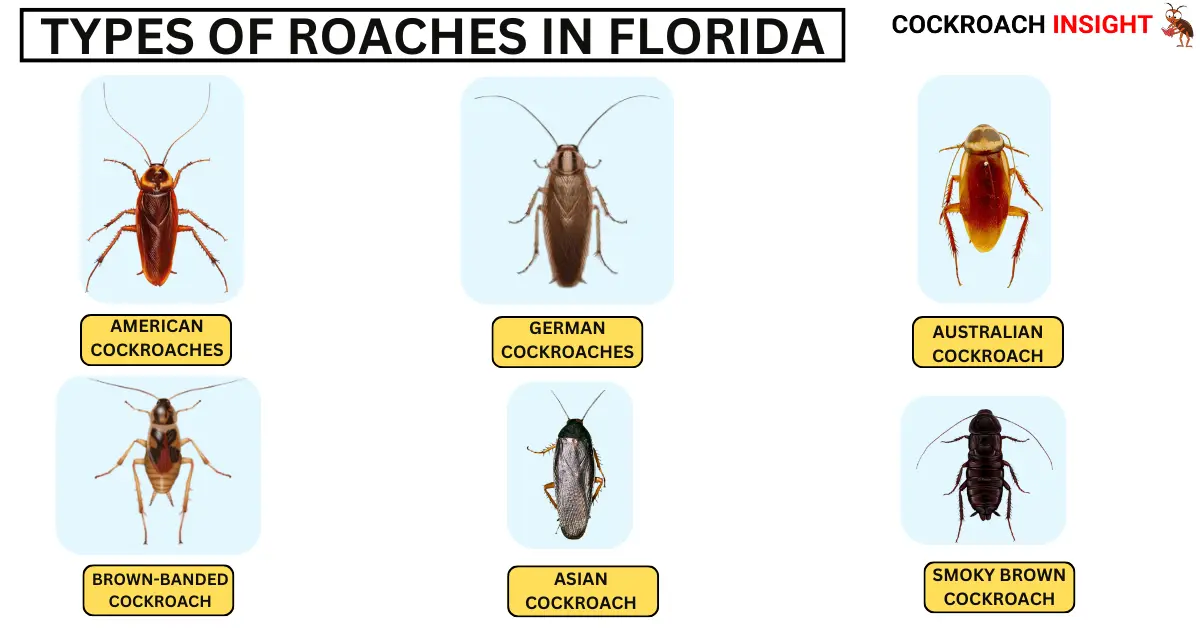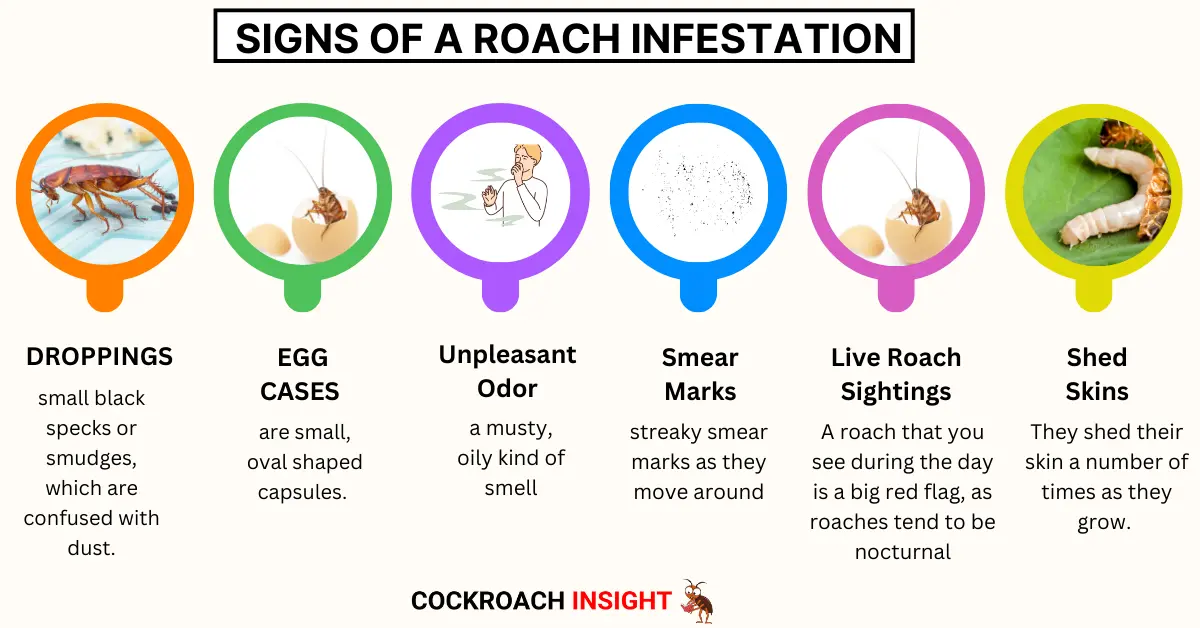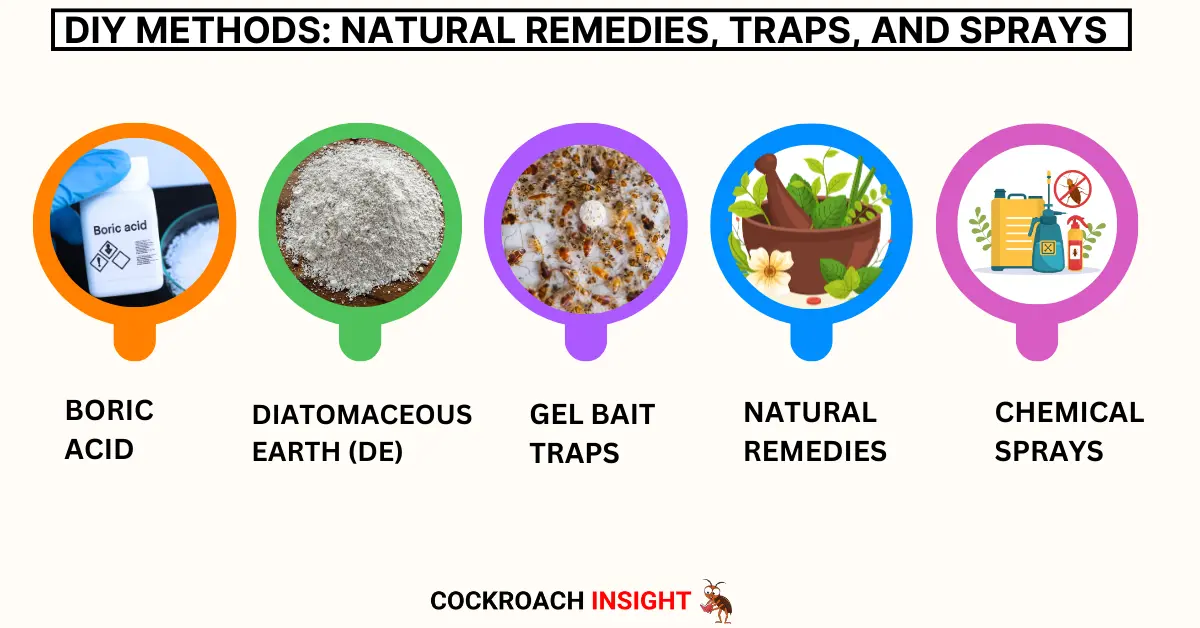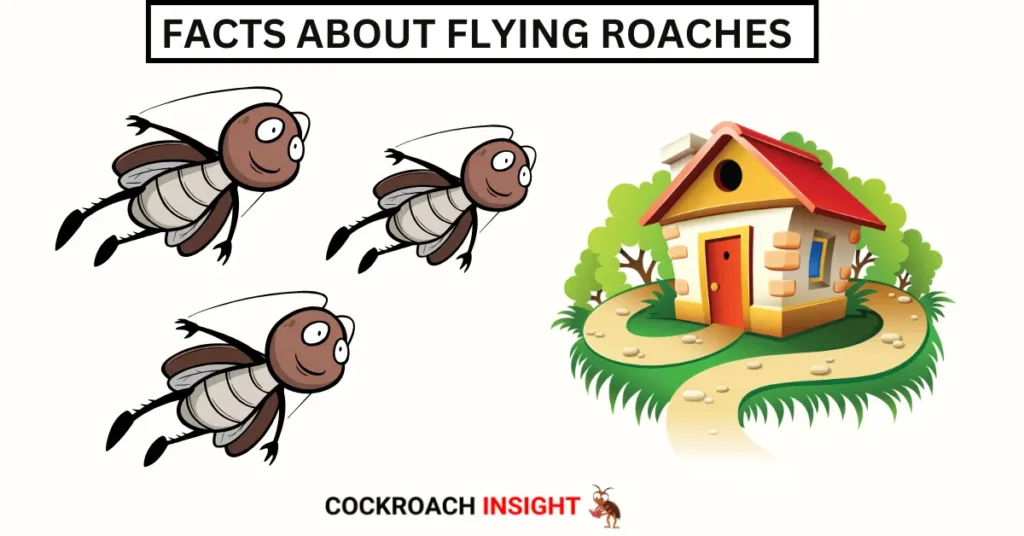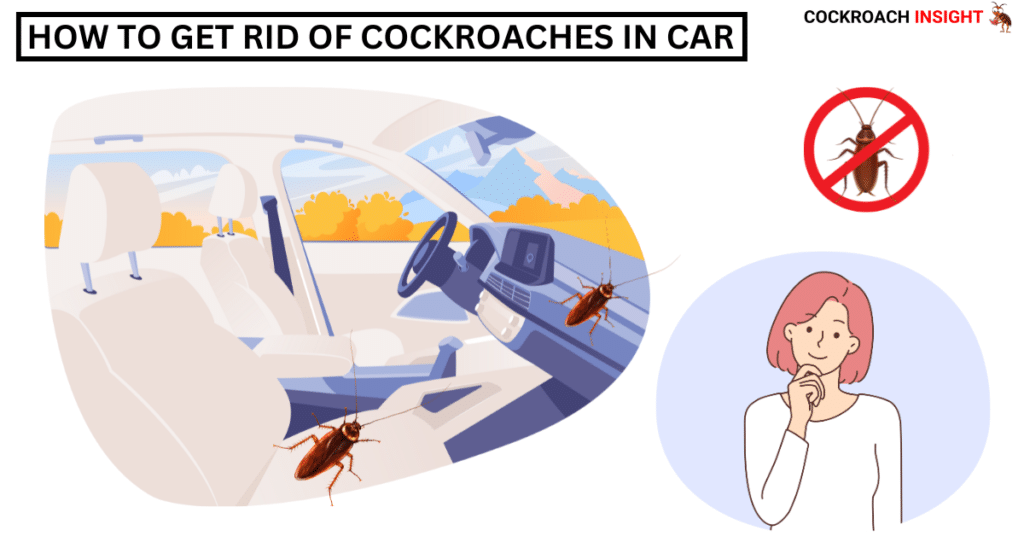Florida living offers sunshine and beauty, but it also comes with an unwelcome guest for many homeowners: the persistent cockroach.
The all-too-common roach problem is prevalent here due to the warm, humid climate that makes the state a perfect home for them.
I know how frustrating it is, having dealt with roaches in Florida. The first time I saw one crawling around near my pantry, it wasn’t just gross—it made me wonder how many more might be hiding nearby.
I have tried several methods to get rid of them and then found ones that worked, and I would like to share them with you.
Looking to get rid of roaches in Florida? This guide will explain why roaches are so common in Florida, how to spot roaches, and, most importantly, implement proven DIY eradication techniques, and establish robust long-term prevention strategies, all while ensuring the safety of your family and pets. Get ready to transform your approach to pest control and enjoy a cockroach-free Florida home.
Types of Roaches in Florida
The different species of roaches living in Florida have different traits and behaviors. Firstly, knowing what type you are dealing with is the first step in getting rid of them properly. Here are the most common roaches you’ll encounter in the Sunshine State:
American Cockroach
This is one of the largest roaches in Florida, also known as the “palmetto bug.” And they can grow to be up to 2 inches long, reddish brown with a yellows marking on the back of their heads.
One of the more notorious features of these roaches is their ‘ability’ to fly and therefore, it can come as a huge surprise when it suddenly takes off.
They particularly like warm, damp spots like basements, kitchens, drains and sewers.
German Cockroach
German cockroaches are light brown with two dark stripes down the back and are somewhat smaller, but no less troublesome.
In fact, technically, they’re often found in kitchens and bathrooms, which are readily available food and moisture. But these roaches reproduce so fast it can quickly turn into an infestation.
Australian Cockroach
Australian cockroaches are a bit smaller than the American cockroach and have yellow markings on their wings, which are similar in size. They are usually found outdoors in gardens or woodpiles but can easily find their way indoors.
Brown-Banded Cockroach
They are about half an inch long, and they get their name from the light brown bands across their wings. Unlike other roaches, brown banded roaches prefer drier areas such as the bedroom or closet.
Asian Cockroach
German cockroaches were almost identical to the Asian cockroaches, but they behaved differently. They love light and will often hang around the outside of a lawn or near a light fixture. But they can move swift indoors.
Smoky Brown Cockroach
In the humid areas they prefer, these shiny, dark brown roaches are excellent fliers. You can find them in attics, crawl spaces and outdoor areas like mulch beds.
Florida Woods Roach
They are large, shiny, dark brown to black in color, and flightless. Approximately 1.25-1.5 inches, prefer to live in outdoor environments, including Leaf litter, decaying wood; Indoors: Damp areas, garages, utility rooms.
Personal Note
Over the years, I’ve seen these roaches invade my home, but the American and German roaches have been the most common of invaders. The first step was to identify them because each species had to be treated slightly differently. Read our guide on species of cockroaches.
Now that you know what the main types of roaches in Florida are, it’s time to learn why these roaches are so common in Florida.
Why Are Roaches So Prevalent in Florida?
The reason Florida seems to have more roaches than other places is because of its environment. These pests love Florida’s warm and humid climate. Let’s break it down:
The Perfect Weather for Roaches (Constant Warmth & High Humidity):
For the majority of the year, Florida has a climate that is ideal for roaches, with temperatures ranging from 70 to 90°F, which leads to continuous cockroach breeding without a seasonal break, resulting in massive population growth.
However, the humidity helps them stay hydrated, and this is an ideal condition for laying eggs. especially for moisture-loving species like American and Florida Woods roaches.
Abundant Vegetation:
Florida’s lush landscapes, dense foliage, and frequent rainfall create ample outdoor harborage for roaches, from where they can easily migrate indoors.
Urban Infrastructure:
Dense urban areas with extensive sewer systems provide perfect, endless hiding and breeding spots near human habitats.
Seasonal Fluctuations:
During the rainy season, rising moisture and flooding drive more roaches indoors seeking dry, safe areas.
High Reproduction Rates:
Roaches multiply quickly, and Florida’s favorable conditions mean they reproduce year-round. For example, German cockroaches can produce thousands of offspring in just a year, making it challenging to control an infestation without immediate action.
Personal Observation
I’ve noticed how quickly roaches can appear after a rainstorm. These pests will attract to the house and especially around entry points such as doors or windows because of the moisture collecting around the house.
I realized that Florida’s weather and the availability of water had a big impact on their prevalence. Reducing outdoors moisture and sealing cracks helped keep them away.
Now that you know why there are so many roaches in Florida, let’s talk about the signs of a roach infestation so you can catch the problem early.
Signs of a Roach Infestation
An infestation of roaches is an expert at hiding, so an infestation might go undetected until it becomes a bigger problem. However, there are several telltale signs that can help you detect their presence early:
Droppings
Roach droppings generally appear first as small black specks or smudges, which are confused with dust. They may be near food sources, baseboards, or cabinets.
There was once a moment when I saw tiny black specks next to my kitchen sink and thought they were just dust until I saw a roach nearby. That taught me to pay closer attention to even the smallest clues.
Egg Cases (Oothecae)
Egg cases of roaches are small, oval shaped capsules. These cases contain several eggs and are usually in concealed locations such as behind appliances, in cracks and crevices.
When I clean under my refrigerator, I come across several of these egg cases. It was an eye opener to see there was more to problem than I thought.
Unpleasant Odor
If it smells strong, it could be a sign of a roach infestation— particularly a musty, oily kind of smell. That stench is coming from the roaches and their droppings.
Once I noticed this odd smell in my own pantry, I checked, and sure enough, I found a few roaches hiding behind a bag of rice.
Smear Marks
Roaches with a lot of moisture may leave streaky smear marks as they move around. You’ll see these near sinks, drains, or along walls.
Live Roach Sightings
A roach that you see during the day is a big red flag, as roaches tend to be nocturnal. If they’re out in the open in daylight, it could be because their hiding spots are too crowded.
When I first saw a roach at day light, I realized that my home was now more roach friendly than I had realized. It was a wake up call that we have to act quickly.
Shed Skins
They shed their skin a number of times as they grow. These discarded skins can be found near where they hide, in drawers or behind furniture.
Effective Prevention Tips
Prevention is the key to getting rid of roaches from your home. You can make your home an unappealing environment by taking a proactive approach. Here’s a step-by-step routine that has worked effectively for me:
Seal Entry Points
Even the smallest cracks and gaps can let in roaches. First have a look around your home, scanning for possible entry points – be it under doors, gaps in walls, or breaks in pipes. Seal these areas using caulk or weather-stripping.
For instance, just recently, I had a tiny gap under my kitchen door and closed it with a door sweep. This alone helped greatly in reducing roach activity.
Read our guide on what attract cockroaches to your home.
Keep Your Kitchen Spotless
Roaches love the food and crumbs in the kitchen. Here’s what I do daily:
-
Remove any food residue with a wipe-down of countertops.
-
Clean crumbs off the floor with a sweep and mop.
-
Remove grease from the stove and other cooking areas.
-
Keep food stored in airtight containers, so roaches do not have access to it.
I started to make this part of my nighttime routine and saw roaches occur less frequently in my home.
Clean and Organize the Pantry
Pantries get roaches that really love to hide and eat and should be cleaned regularly. Go through your pantry weekly to:
-
Make sure to check for spilled or crumbled food and clean it immediately.
-
Expired or stale items are thrown out.
-
Wipe shelves down and keep them organized.
It also stopped pantry infestations when I started using airtight storage containers for dry goods like rice and flour.
Focus on Bathrooms and Patios
Bathrooms and patios are other popular hotspots for roaches because they both attract moisture, and roaches are attracted to moisture.
-
In the bathroom, fix leaks on faucets or pipes, and make sure floors are dry afterward.
-
On the patio, clear away debris,, trim tree branches right outside of the house, and make sure the outdoor furniture and items are clean and dry.
When I sealed a tiny leak under my bathroom sink, the number of roaches I found in that area fell down significantly.
Reduce Overall Moisture
Water is necessary for their survival, so eliminating excess moisture is critical. Look for and treat leaks, use a dehumidifier in humid areas, and make sure drains can’t hold standing water.
Following this prevention routine, I made sure to have kept my home roach free for months. Consistency and attention to detail, that’s all that’s needed.
Taking these steps now will eliminate having to deal with a future infestation. Well, prevention is truly the best defense!
DIY Methods: Natural Remedies, Traps, and Sprays
These do-it-yourself methods can help you regain control of your home if the infestation is minor.
Boric Acid
How it Works: You can sprinkle boric acid in places like under the sinks, behind the appliances, or near the baseboards. It’s ingested by roaches, causing them to dehydrate and die.
-
Pros: Very inexpensive, very effective, and widely available.
-
Cons: Careful application is needed to prevent pets and children from harm.
Boric acid has worked very well for me when I’ve used it near my kitchen sink, and it cut down the roach activity by a lot in only a few days. Read our complete guide on how to kill cockroaches by using boric acid.
Diatomaceous Earth (DE)
How it Works: DE is a natural powder that dehydrates roaches upon contact. Spread it in the cracks, crevices, and corners of your house.
-
Pros: For minor infestations, safe for pets and humans, effective.
-
Cons: Needs time to show results and only affects direct contact.
Gel Bait Traps
How it Works: The bait attracts roaches; they eat the poison and carry it back to their nests to spread throughout.
-
Pros: It is a great target for hidden roaches as well as their nests.
-
Cons: It needs to be placed strategically for maximum impact.
Natural Remedies
Examples: Bay leaves, peppermint oil spray, and sugar with baking soda.
-
Pros: Safe and non-toxic.
-
Cons: Not as effective for larger infestations.
Once, I used peppermint oil spray on window frames, and it was an effective deterrent.
Chemical Sprays
How it Works: Kills roaches on contact. Sprays are used in high traffic areas, such as under sinks or around drains.
-
Pros: Immediate results.
-
Cons: It does not address hidden nests and can be damaging if overused.
Professional Pest Control Services: When and Why to Call Them
There are scenarios when even trying hard DIY methods will not get rid of roaches. It is when professional pest control services step in.
If you do see roaches during the day, or if DIY treatments haven’t solved the problem, you should really call in the experts. Signs that professional intervention is required include persistent or recurring infestations.
There are some things pest control professionals can do for you. Such chemicals are stronger and more effective, and they use techniques, like fumigation or heat treatment, that the average homeowner can’t employ.
Additionally, professionals aren’t merely bedbug exterminators but can also detect and find hidden nests and entry points that are overlooked easily so that the problem is solved at its root.
My Personal Success Story
I’ll always remember when I got German cockroaches in my kitchen. First, I tried everything: boric acid, traps, and even peppermint oil sprays, but the roaches always came back. I didn’t realize the infestation was so bad until one actually crawled out in broad daylight.
So, I called a professional pest control company, and that was the best thing I could do. Hidden nests were found behind the refrigerator and under the cabinets by the exterminator.
They provided me with a thorough treatment and practical advice on closing entry points and keeping the area moist in an area free of moisture. I haven’t seen a single of those roaches in my home since then.
Conclusion
Living in Florida and dealing with roaches can be a hassle but not impossible. Knowing how to prevent and treat these pests is important because understanding why they are so common will help you take control of your home.
Sealing entry points, keeping your environment clean and dry, and using targeted treatments will help keep these unwanted guests at bay in some way or another.
From my experience, I have learned you need to act fast and keep on going. Do not ignore the signs of a roach problem as it can only get worse. With severe infestations, you’ll need to turn to professional pest control, but either way, the secret is staying proactive.
Keep in mind that Florida’s climate is ideal for roaches, but if you protect your house, you can protect your peace of mind.
Go through this guide, start with the following tips and strategies, and take action now. It’s not something to dream about anymore: getting a roach-free home. You’ve got this!
FAQ SECTION
Are roaches common in Florida?
Yes, Florida’s warm and humid climate makes roaches very common year-round.
What attracts roaches to my house?
Food crumbs, grease, standing water, and clutter are major attractions. They also enter through cracks and gaps.
What’s the best way to get rid of roaches?
Use boric acid or bait traps, keep your home clean, seal entry points, and reduce moisture. For severe cases, hire a pest control service.
Are natural remedies effective?
Natural remedies like peppermint oil or diatomaceous earth help prevent roaches but may not work for larger infestations.

